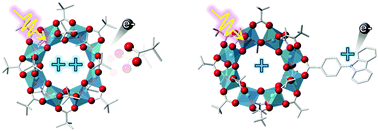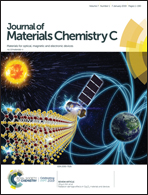Tuning photoionization mechanisms of molecular hybrid materials for EUV lithography applications†
Abstract
The investigation of the photoionization processes of a series of titanium oxo clusters evidenced that doping their organic shell with extended aromatic structures decreases their ionization energy and stabilises the resulting radical cations. Such tunability of their photochemistry arising from ligand exchange gives these hybrid compounds great potential as EUV photoresists.



 Please wait while we load your content...
Please wait while we load your content...